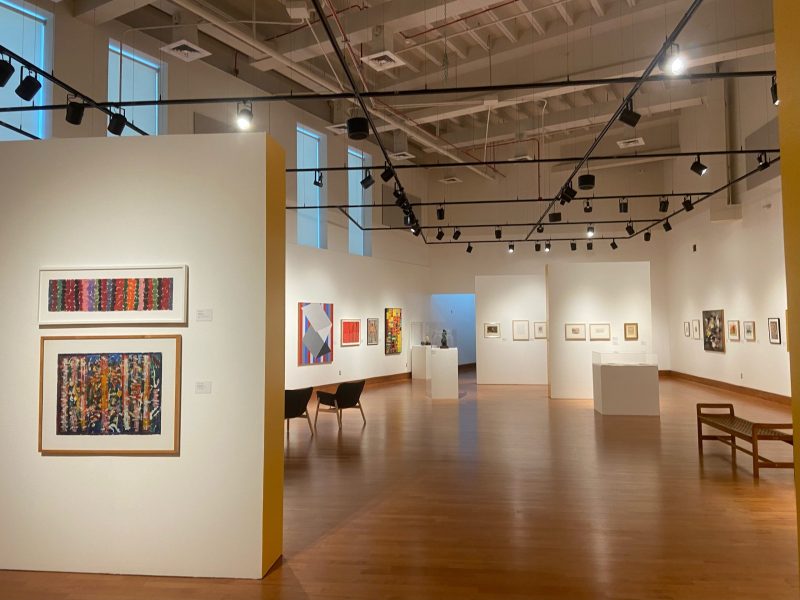People look like ghosts underwater — or so became evident in the MFA Dance Thesis Concert Waking Darkness. Waiting Light. The show, put on by the School of Theatre, Dance and Performance Studies, took place at the Clarice Smith Performing Arts Center Friday through Sunday and incorporated video projections such as people leaping into water and dancing while submerged.
During the show, the mercurial lighting proved to be a character of its own. Whether searing across the stage in a vibrant hue of cobalt blue or flashing across the wall like lightning, the performers interacted with it as they did with each other.
The stage was empty except for a ladder and a stationary bike with its back wheel rooted in a log. From the perspective of the performance’s projection designer Mark Costello, these two props come alive.
Costello said he made the props “reactive” by using Wi-Fi-based technology that triggered sound and movement.
“So when [choreographer] Colette [Krogol] climbed the ladder, it cued the audio and video,” he said, “and as the bike was pedaled, the speed Matt was pedaling dictated the speed the video of Cuba was playing.”
Much of the performance was based on Krogol’s Cuban-American identity and the stories she was told as a child.
“One of the core elements within all of these stories was this universal concept of waiting,” she said. “Whether you’re waiting for someone, waiting to come, waiting to return, waiting in line.”
Costello emphasized the interaction of the dancers with all other elements. He called the physical world the “fifth performer.”
He also said the purpose of the lighting and projected videos was to “make the space feel like it was a living, breathing part of the performance.”
This could not be more true. At one point, a curtain of blue light splits the stage in two and acts as a wall between three dancers and the fourth. Two dancers are later pushed up against a wall with pink light glowing behind them, imitating or dictating their movements.
The production was unified by a mesmerizing sense of wonder and strangeness.
“Our choreography operates in a much more dreamlike reality than you might be used to at a usual dance concert,” choreographer Matt Reeves said.
It was clear that the light often acted as a visual representation for the concept of waiting, especially when a pink bar of light slowly moved down the wall for three minutes.
The waiting is not futile, however, as “within wait also comes hope,” Krogol said.
As a culmination of Krogol and Reeves’ graduate studies, the performance offered a frighteningly introspective space for viewers. The show forced them to sit in silence with little more stimulation than a moving beam of light, so they must stew in their own thoughts.
The performers occasionally shined hand-held lights into the audience, transposing the stage and the viewer so suddenly, it was impossible to see the performers and the audience members found themselves trapped in the spotlight.



